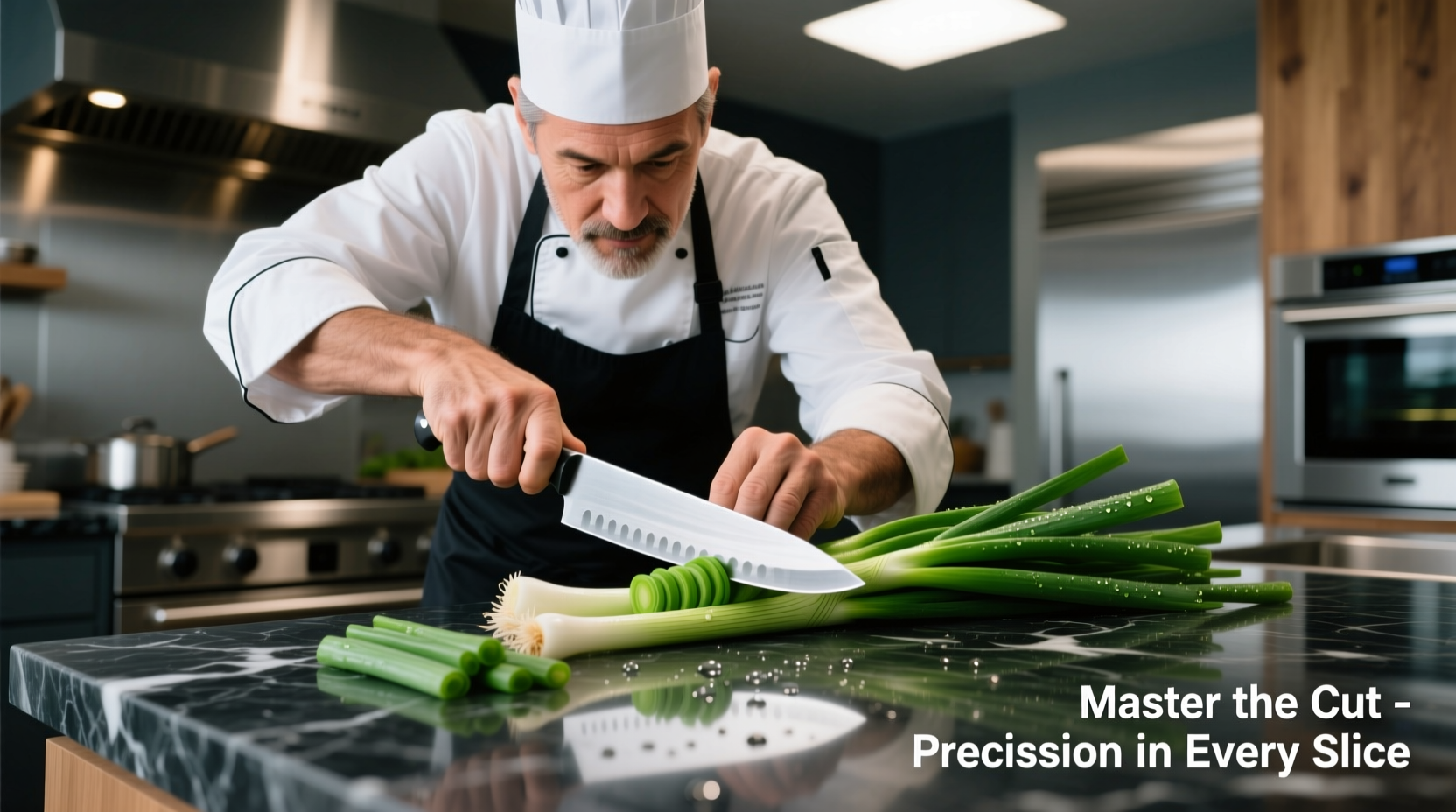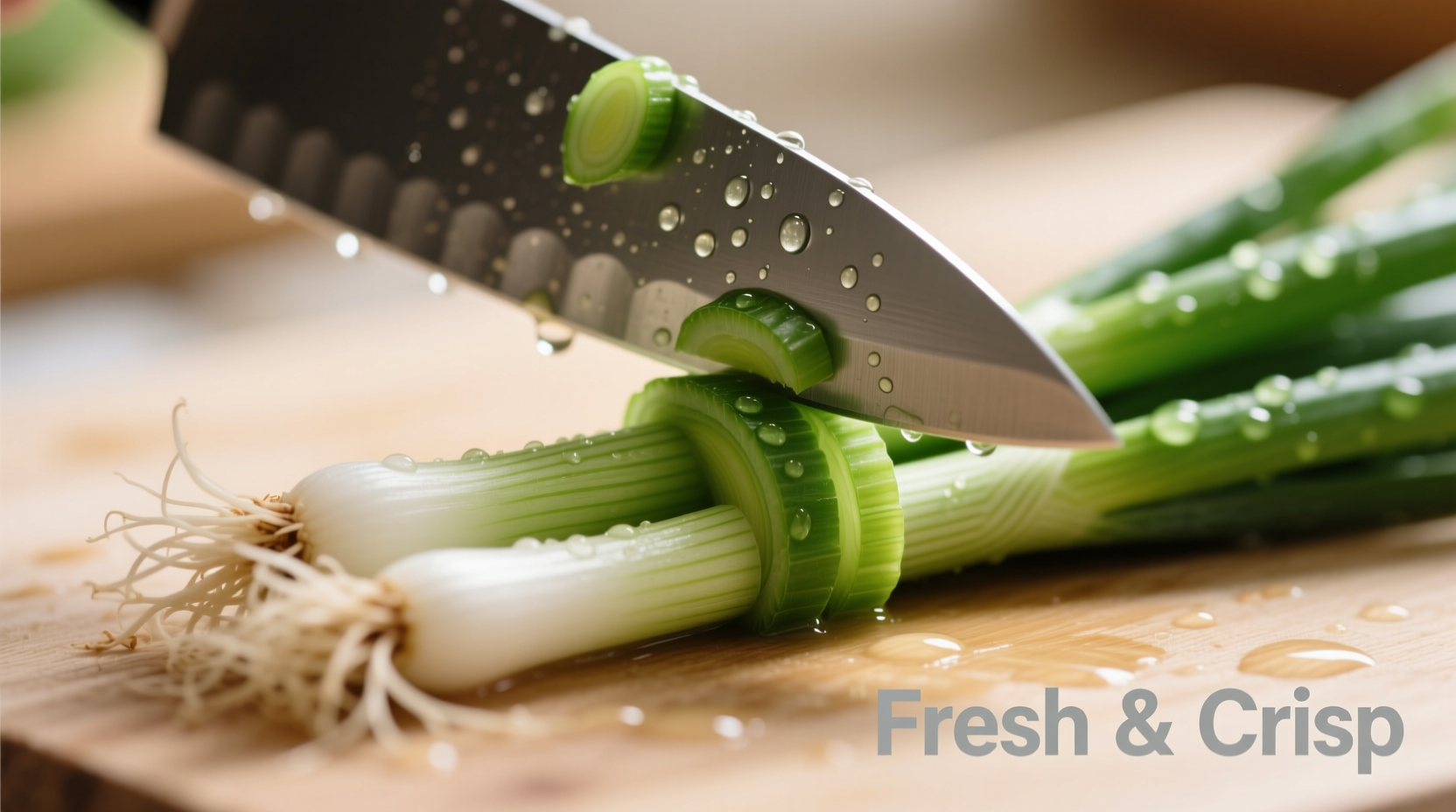Green onions (also called scallions or spring onions) are kitchen staples that add vibrant flavor to countless dishes. But most home cooks waste half their potential by treating white and green parts identically. As a professional chef with years of experience teaching knife skills, I've seen how proper cutting technique transforms ordinary ingredients into extraordinary flavors.
Why Proper Green Onion Cutting Matters
The white and green sections of green onions contain different flavor compounds that respond uniquely to heat and preparation. According to USDA food science research, the white bulbs contain higher concentrations of sulfur compounds that mellow beautifully when cooked, while the green tops offer fresher, grassier notes best preserved raw. Cutting them properly ensures you maximize each part's culinary potential.
Essential Tools for Perfect Green Onion Preparation
You don't need specialized equipment, but having the right basics makes all the difference:
- 8-10 inch chef's knife - Sharp blades prevent bruising and ensure clean cuts
- Stable cutting board - Wood or composite surfaces protect your knife edge
- Bowl for scraps - Keep your workspace organized
Step-by-Step Cutting Technique
Preparation Phase
Before cutting, properly prepare your green onions:
- Trim off root ends (about 1/4 inch)
- Rinse thoroughly under cold water, separating layers to remove dirt
- Pat dry with clean kitchen towel
Cutting Execution
Follow these professional steps for optimal results:
- Identify the transition point - Locate where the white stem becomes green (this flavor boundary is crucial)
- Separate the sections - Cut horizontally at the color change line
- White bulb technique - Place flat side down, slice crosswise into 1/4-inch rounds for even cooking
- Green top technique - Hold vertically, slice at 45-degree angles for attractive presentation and maximum surface area

Flavor Optimization Guide
Understanding how to use each part properly elevates your cooking:
| Green Onion Part | Best Cooking Application | Flavor Profile | Storage Duration |
|---|---|---|---|
| White bulbs | Sautéing, stir-frying, soups | Stronger, pungent when raw; sweetens with cooking | 5-7 days refrigerated |
| Green tops | Garnishes, salads, finishing touches | Milder, grassy, fresh | 3-4 days refrigerated |
Proper Storage Methods
Extend freshness with these storage techniques recommended by the FDA Food Code guidelines:
- Refrigeration - Store cut green onions in airtight container with slightly damp paper towel
- Water method - Place cut ends in 1 inch of water, cover with plastic bag in refrigerator (changes water daily)
- Freezing - Blanch white parts for 1 minute, freeze on baking sheet before transferring to freezer bags
Avoid These Common Cutting Mistakes
Based on culinary institute observations, these errors waste flavor potential:
- Using dull knives - Bruises cells, releasing bitter compounds
- Cutting both parts identically - White parts become mushy, green parts don't soften properly
- Improper storage - Causes rapid spoilage and sliminess
- Discarding root ends - Can regrow in water for continuous supply
Advanced Technique: Maximizing Flavor Release
Food science research from the American Chemical Society shows that cutting technique affects flavor development. For white bulbs destined for cooked dishes, allow cut pieces to rest 5-10 minutes before cooking. This resting period lets enzymatic reactions develop more complex flavor compounds. For green tops used raw, cut immediately before serving to preserve maximum freshness.
Troubleshooting Common Issues
When green onions become slimy or lose crispness, it's usually due to improper moisture management. The National Center for Home Food Preservation recommends storing cut green onions with a paper towel to absorb excess moisture while maintaining proper humidity levels.











 浙公网安备
33010002000092号
浙公网安备
33010002000092号 浙B2-20120091-4
浙B2-20120091-4